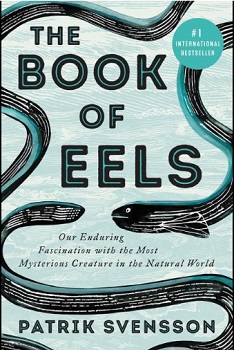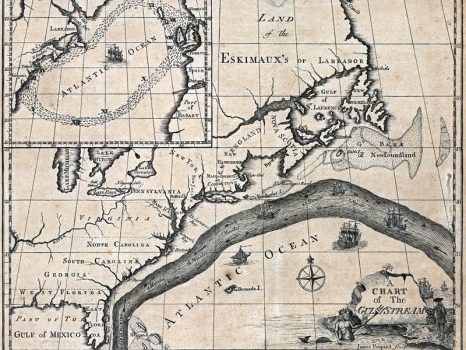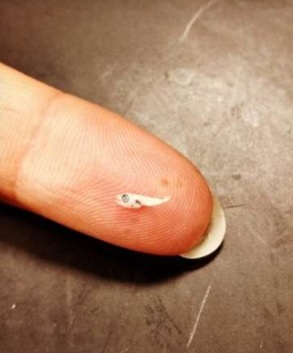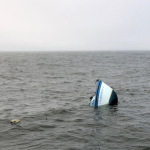Tag Archives: Gulf Stream
Warming Waters Heat Summer’s Feast Well Before It Gets to the Kitchen
 An ever-warming planet is playing havoc with the intricately interconnected web of marine life. Just as climate has long stressed human populations and driven migration, marine populations are stressed and in search of survivable climates too. In New England, scientists and lobstermen alike are studying and living the impacts. Tim Alley has been lobstering in Maine’s coastal waters for 40 years. “There’s been a trend in recent years related to temperatures,” he says. Alley is steeped in the traditions of his home state’s biggest industry and recently dusted off a short film from 1972 in which he starred at age 12, “Alone in My Lobster Boat,” filmed in South Bristol and New Harbor, Maine. Like most lobstermen, he would call himself an environmentalist: they live on the water, they live from the water, they thrive on the water. But they reject the notion that a species – the right whale – is failing because of them. Over 40 years, he says, he has seen exactly one right whale. Photos, Video, more, >>CLICK TO READ<< 14:50
An ever-warming planet is playing havoc with the intricately interconnected web of marine life. Just as climate has long stressed human populations and driven migration, marine populations are stressed and in search of survivable climates too. In New England, scientists and lobstermen alike are studying and living the impacts. Tim Alley has been lobstering in Maine’s coastal waters for 40 years. “There’s been a trend in recent years related to temperatures,” he says. Alley is steeped in the traditions of his home state’s biggest industry and recently dusted off a short film from 1972 in which he starred at age 12, “Alone in My Lobster Boat,” filmed in South Bristol and New Harbor, Maine. Like most lobstermen, he would call himself an environmentalist: they live on the water, they live from the water, they thrive on the water. But they reject the notion that a species – the right whale – is failing because of them. Over 40 years, he says, he has seen exactly one right whale. Photos, Video, more, >>CLICK TO READ<< 14:50

How much like the eel are we?
“The Book of Eels” is as much about origins and meaning as it is about eels. Once people comprehend the eel’s astonishing life journey, it’s difficult not to identify, seek metaphors of association and anthropomorphize. The eels’ mysteries are ours as well. After millennia of study and conjecture, we now know that American and European eels get their start in the Sargasso Sea northeast of Cuba. We also know that the nascent eels – tiny, transparent, flat larvae that are shaped like willow leaves – float off on currents either to America or Europe. Upon arriving at a predestined coast, their transformed little bodies smoothly transition from salt to freshwater. They choose a brook or stream and eventually settle down at some spot – random or not is unknown >click to read< 15:22

Canadian fishing buoy found in Norway
After Lars Framvik and a friend found a fishing balloon on the shore of Andenes, Norway, in November 2015, Framvik wanted to find its owner, but there were a few challenges. While there was a phone number on the balloon, it didn’t have an area or country code, so phoning the owner wasn’t an option. While it was marked with the vessel name, Blaine + Hayden, Framvik thought that was the place it was from. But the balloon did have another hint: the name Terry Saulnier appeared on it. click here to read the buoy story 09:00

Benjamin Franklin Was the First to Chart the Gulf Stream
Gulf Stream ring water intrudes onto continental shelf like ‘Pinocchio’s nose’
 Ocean robots installed off the coast of Massachusetts have helped scientists understand a previously unknown process by which warm Gulf Stream water and colder waters of the continental shelf exchange. The process occurs when offshore waters, originating in the tropics, intrude onto the Mid-Atlantic Bight shelf and meet the waters originating in regions near the Arctic. This process can greatly affect shelf circulation, biogeochemistry and fisheries. “I showed the glider data to a group of commercial fisherman back in April, in Rhode Island, and they were very surprised,” Read the rest here 11:05
Ocean robots installed off the coast of Massachusetts have helped scientists understand a previously unknown process by which warm Gulf Stream water and colder waters of the continental shelf exchange. The process occurs when offshore waters, originating in the tropics, intrude onto the Mid-Atlantic Bight shelf and meet the waters originating in regions near the Arctic. This process can greatly affect shelf circulation, biogeochemistry and fisheries. “I showed the glider data to a group of commercial fisherman back in April, in Rhode Island, and they were very surprised,” Read the rest here 11:05












































